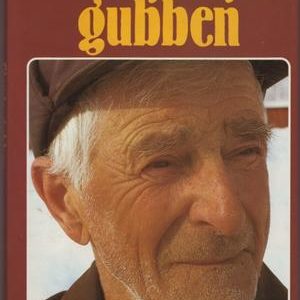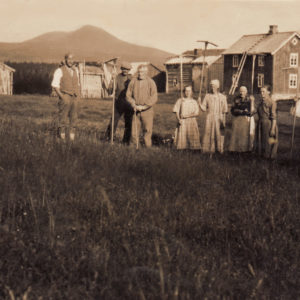Farmyard and cultural landscape on Gjefsjøen has several hundred years of traditions with farming, fishing and hunting. Traditions that are still maintained by those who live there today. The farm has been inhabited since the 1790s.
There are many stories about the hardy people who live and have lived here, about "Bjørk-Ersen" who shot 49 bears with the rifle "Makalausa" and was honored by the Swedish king for his achievements, about the trout of eight kilos, and "Gjefsjø-Gubben" Alfred Anderson as he the "wolf winter" of 1939 shot three wolves the same day, and the fourth day after.
In the last months of the war in 1945, Gjevsjøen was a central place in connection with the sabotage operation Rype. The saboteurs had their base on the mountain farm. Operation Rype's mission was to sabotage the railway to delay the withdrawal of German troops. Both Norwegians and Americans were part of the sabotage group. The leader of the saboteurs was William E. Colby, later chief of the CIA. To bring in the necessary equipment for the operations, planes were sent from England and Scotland.
During one of the supporting flichts one plane crashed atthe mountain Plukkutjønnfjellet, which is northwest of Gjevsjøen. All 12 men on board died. At the place where the plane crashed, a memorial monument was erected in 1949. Rype blew up the Tangen bridge in Stod and railway tracks in Lurudalen in April 1945. A few days before the liberation, a German patrol arrived at Gjevsjøen. Clashes broke out between the Germans and the saboteurs and all five German soldiers were killed. One of the Norwegians was injured, but survived.
The farm is today run by Nils Christian Gjefsjø (b. 1983) and the main source of income is now tourism in addition to farming.
Several of the stories from Gjefsjøen are described in the book "Gjevsjøgubben" by NRK journalist Helge Kjenstad from 1983. The story of Operasjon Rypee is told in the book "Kampen om Nordlandsbanen" (in norwegian) by author Frode Lindgjerdet.
See also Norwegian broadcaster NRK's program in the series "Der ingen skulle tru at nokon kunne bu" (Where no one should believe that anyone could live") from 2005. The program is out on NRK Web-TV.
WW2 sabotage
Operasjon rype
In the last months of the war during spring 1945. Gjefsjøen Mountain Farm was a central location as part of the sabotage operation "Operasjon Rype". The saboteurs had their headquarter at the farm. Operasjon Rype's mission was to sabotage the railroad through Trøndelag and Snåsa. Today Home Guard's task force "Rype" is named after the operation.




















